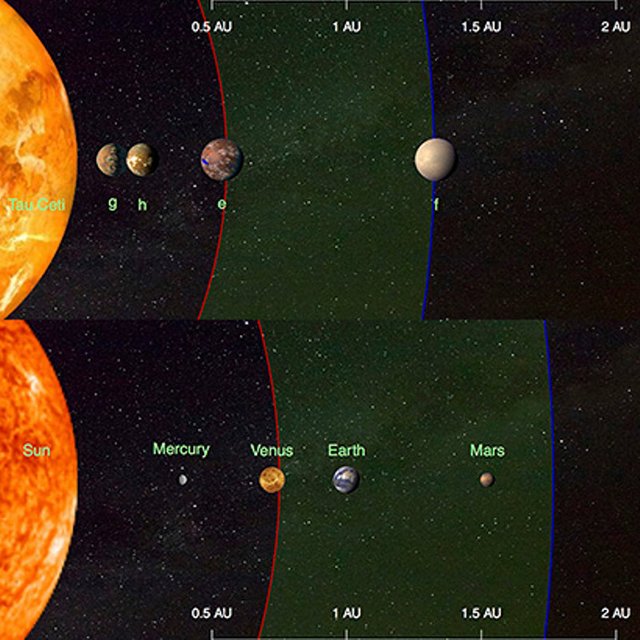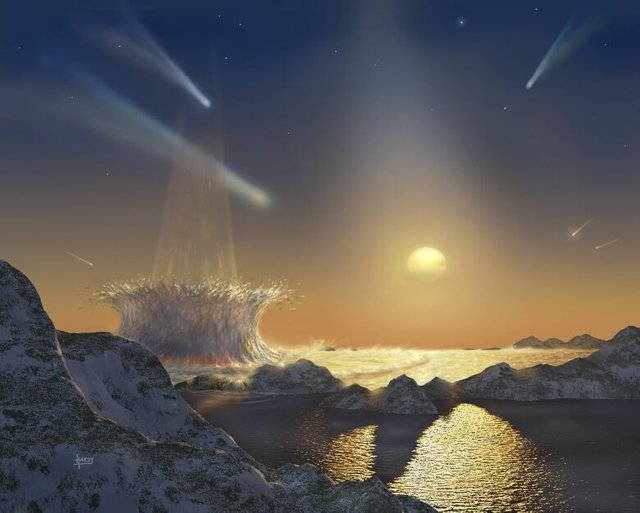The nearby sun-like star with four Earth-sized planets
Tau Ceti is a star in the constellation Cetus located 12 light years (3.7 parsecs) away. With mass 78% of our Sun and spectral type G8.5 it is one of two Sun-like stars in 15 light years range. Tau Ceti often appears in sci-fi literature.
First study by international team of astronomers in 2012 suggested presence of 5 planets of terrestrial type, orbiting tau Ceti. Discovery was made after processing 4398 measurements during 2142 days on the HARPS spectrograph.
Five years later the same team published new study with updated information: of five, only four planets are confirmed.

Image: Fabo Feng - Comparison of tau Ceti planet system with Earth's inner planets
Two planets are located on the boundaries of habitable zone. These are rocky Super-Earths: e has measured mass range from 3.29 to 4.76 of Earth, while f is in range 2.56 - 4.98 of Earth. They orbit the star in, 163 and 636 days correspondingly.
With this discovery tau Ceti becomes one of the most interesting planet systems. Sun-like stars are thought to be the best targets in the search for habitable Earth-like planets due to their similarity to the sun. Unlike more common smaller stars, such as the red dwarf stars Proxima Centauri and Trappist-1, they are not so faint that planets would be tidally locked, showing the same side to the star at all times. Tau Ceti is very similar to the sun in its size and brightness, and both stars host multi-planet systems.
The definition of habitable zone is highly speculative - it shows only temperature balance and does not take into account atmospheric parameters and special conditions. For example, Mars is located in habitable zone but it is very unhospitable for life. Tau Ceti in addition to planets hosts a massive debris disc around the star which probably reduces their habitability due to intensive bombardment by asteroids and comets.

Image: solstation.com - Any Earth-type planet orbiting Tau Ceti would experience more cometary and asteroidal impacts than in the Solar System today
Very interesting post. You are talking about the discovery of planets or solar stars in the solar system. Today increased the science after reading your post .. this information is very useful .. may always be successful for you
At least we know there's a place to move in case north korea goes balls out with their nuke 😔 I hope earth II's mcdonalds still have szechuan sauce tho
Koreans cook tasty kimchi cabbage. Only south, though, north guys have no cabbage at all ;)
Thank you. :)
... Do you think we have been to the moon?
I - no, about you don't know . In Wiki there is a list of 12 people who were there